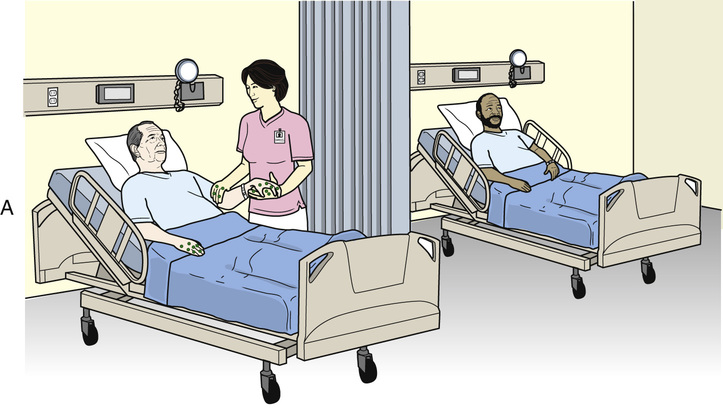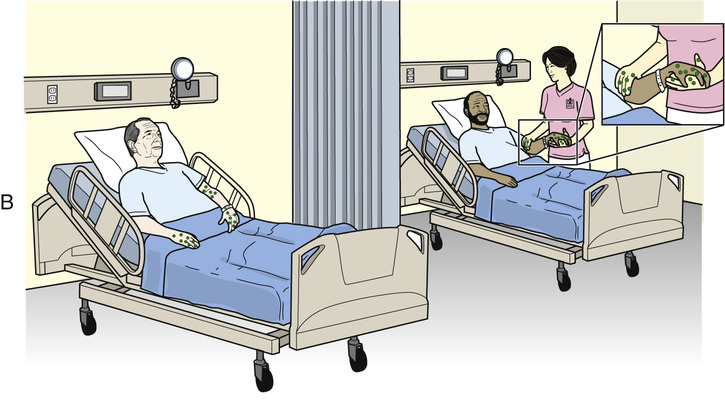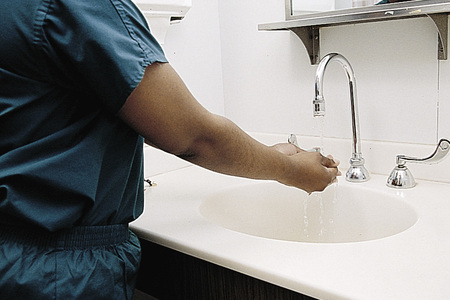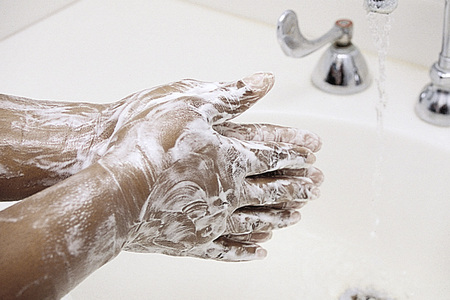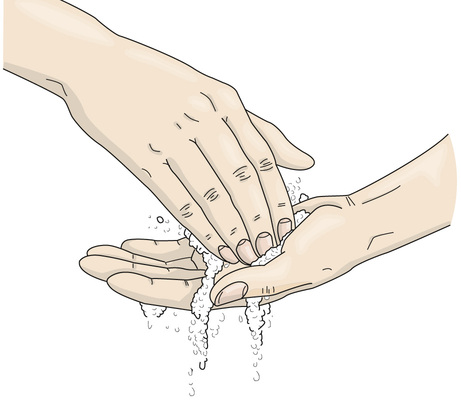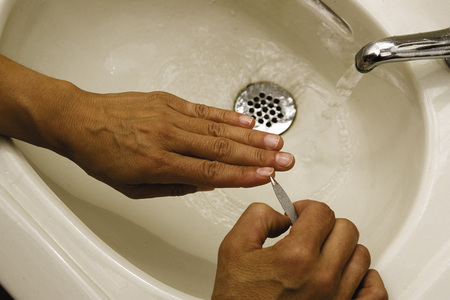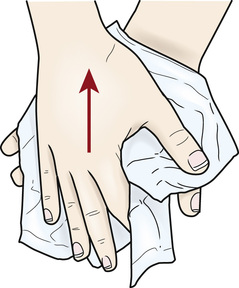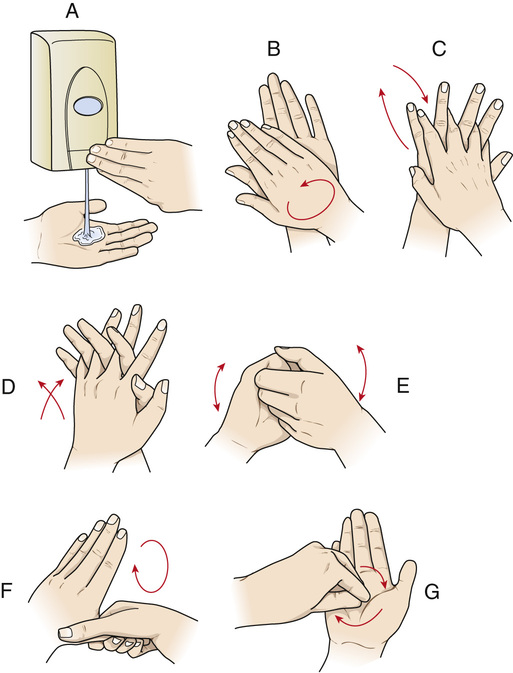Preventing Infection
Objectives
• Define the key terms and key abbreviations in this chapter.
• Identify what microbes need to live and grow.
• List the signs and symptoms of infection.
• Explain the chain of infection.
• Describe healthcare-associated infections and the persons at risk.
• Describe the principles of medical asepsis.
• Explain how to care for equipment and supplies.
• Describe disinfection and sterilization methods.
• Describe Standard Precautions and Transmission-Based Precautions.
• Explain the Bloodborne Pathogen Standard.
• Explain the principles of surgical asepsis.
• Perform the procedures described in this chapter.
• Explain how to promote PRIDE in the person, the family, and yourself.
Key Terms
Key Abbreviations
| AIDS | Acquired immunodeficiency syndrome |
| CDC | Centers for Disease Control and Prevention |
| cm | Centimeter |
| EPA | Environmental Protection Agency |
| GI | Gastro-intestinal |
| HAI | Healthcare-associated infection |
| HBV | Hepatitis B virus |
| HIV | Human immunodeficiency virus |
| MDRO | Multidrug-resistant organism |
| MRSA | Methicillin-resistant Staphylococcus aureus |
| OPIM | Other potentially infectious materials |
| OSHA | Occupational Safety and Health Administration |
| PPE | Personal protective equipment |
| TB | Tuberculosis |
| VRE | Vancomycin-resistant Enterococci |
An infection is a disease state resulting from the invasion and growth of microbes in the body. Infection is a major safety and health hazard. Minor infections are short-term. Some infections are serious and can cause death. Infants, older persons, and disabled persons are at risk. The health team follows certain practices and procedures to prevent the spread of infection (infection control). The goal is to protect patients, residents, visitors, and staff from infection.
This chapter includes measures of antisepsis. Antisepsis is the processes, procedures, and chemical treatments that kill microbes or prevent them from causing an infection. (Anti means against. Sepsis means infection.)
Microorganisms
A microorganism (microbe) is a small (micro) living thing (organism). It is seen only with a microscope. Microbes, commonly called germs, are everywhere—mouth, nose, respiratory tract, stomach, and intestines. They are on the skin and in the air, soil, water, and food. They are on animals, clothing, and furniture.
Microbes that are harmful and can cause infections are called pathogens. Non-pathogens are microbes that do not usually cause an infection.
Types of Microbes
There are 5 types of microbes.
Requirements of Microbes
Microbes need a reservoir to live and grow. The reservoir (host) is the environment in which a microbe lives and grows. People, plants, animals, the soil, food, and water are common reservoirs. Microbes need water and nourishment from the reservoir. Most need oxygen to live. A warm and dark environment is needed. Most grow best at body temperature. They are destroyed by heat and light.
Normal Flora
Normal flora are microbes that live and grow in a certain area. Certain microbes are in the respiratory tract, in the intestines, and on the skin. They are non-pathogens when in or on a natural reservoir. When a non-pathogen is transmitted from its natural site to another site or host, it becomes a pathogen. For example, Escherichia coli (E. coli) is normally in the colon. If it enters the urinary system, it can cause an infection.
Multidrug-Resistant Organisms
Multidrug-resistant organisms (MDROs) are microbes that can resist the effects of antibiotics. Antibiotics are drugs that kill certain microbes that cause infections. Some microbes can change their structures, making them harder to kill. They can survive in the presence of antibiotics. Therefore the infections they cause are hard to treat.
MDROs are caused by prescribing antibiotics when not needed (over-prescribing). Not taking antibiotics for the length of time prescribed is another cause. Two common MDROs are:
Infection
A local infection is in a body part. A systemic infection involves the whole body. (Systemic means entire.) The person has some or all of the signs and symptoms listed in Box 16-1.
See Focus on Children and Older Persons: Infection.
See Focus on Surveys: Infection.
The Chain of Infection
The chain of infection (Fig. 16-1) is a process involving the following.
• Reservoir—The pathogen needs a place where it can grow and multiply. A carrier is a human or animal that is a reservoir for microbes but does not develop the infection. Carriers can pass pathogens to others. A vector is a carrier (animal, insect) that transmits disease. Common vectors are:
• Ticks—carry Rocky Mountain spotted fever
• Mites—cause scabies (Chapter 22)
• Method of transmission—The pathogen is transmitted to another host (Fig. 16-2, p. 220). A vehicle is any substance that transmits microbes.
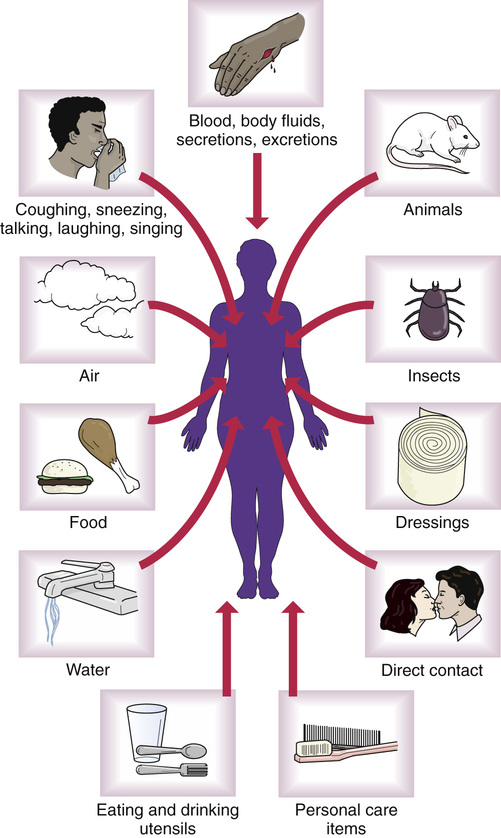
Susceptible Hosts.
Susceptible hosts include persons who:
The ability to resist infection relates to age, nutrition, stress, fatigue, and health. Drugs, disease, and injury also are factors. Severe infection can be deadly for:
• Burn patients. When burns destroy the skin, the wound is a portal of entry for microbes. Microbes are from the person’s normal flora (p. 218), the health care setting, and the health team. MRSA and VRE are great concerns. Burns affect the immune system (Chapter 10) and the ability to fight infection.
Healthcare-Associated Infections
A healthcare-associated infection (HAI) is an infection that develops in a person cared for in any setting where health care is given (Box 16-2). The infection is related to receiving health care. Hospitals, nursing centers, clinics, and home care settings are examples. HAIs also are called nosocomial infections. (Nosocomial comes from the Greek word for hospital.)
HAIs are caused by normal flora. Or they are caused by microbes transmitted to the person from other sources. For example, E. coli is normally in the colon. Feces contain E. coli. Poor wiping after bowel movements can cause E. coli to enter the urinary system. With poor hand-washing, E. coli spreads to any body part or anything the hands touch. It also can be transmitted to other people.
Microbes can enter the body through care equipment and supplies. Such items must be free of microbes. Staff can transfer microbes from 1 person to another and from themselves to others. Common sites for HAIs are:
Patients and residents are weak from disease or injury. Some have wounds or open skin areas. Infants and older persons have a hard time fighting infections. The health team must prevent infection by:
• Medical asepsis. This includes hand hygiene.
• Standard Precautions, p. 228.
• Transmission-Based Precautions, p. 231.
See Focus on Long-Term Care and Home Care: Healthcare-Associated Infections.
Medical Asepsis
Asepsis is the absence (a) of disease-producing microbes (sepsis means infection). Microbes are everywhere. Measures are needed to achieve asepsis. Medical asepsis (clean technique) is the practices used to:
• Reduce the number of microbes.
• Prevent microbes from spreading from 1 person or place to another person or place.
Microbes cannot be present during surgery or when instruments are inserted into the body. Open wounds (cuts, burns, incisions) require the absence of microbes. They are portals of entry for microbes. Surgical asepsis (sterile technique) is the practices used to remove all microbes. Sterile means the absence of all microbes —pathogens and non-pathogens. Sterilization is the process of destroying all microbes (pathogens and non-pathogens).
Contamination is the process of becoming unclean. In medical asepsis, an item or area is clean when it is free of pathogens. The item or area is contaminated when pathogens are present. A sterile item or area is contaminated when pathogens or non-pathogens are present. Cross-contamination is passing microbes from 1 person to another by contaminated hands, equipment, or supplies (Fig. 16-3). Medical asepsis and surgical asepsis (p. 244) prevent cross-contamination.
Common Aseptic Practices
Aseptic practices break the chain of infection. To prevent the spread of microbes, wash your hands:
• After changing tampons or sanitary pads.
• After coughing, sneezing, or blowing your nose.
• Before and after handling, preparing, or eating food.
Also do the following.
• Provide all persons with their own linens and personal care items.
• Cover your nose and mouth when coughing, sneezing, or blowing your nose. If tissues are not available, cough or sneeze into your upper arm (Fig. 16-4). Do not cough or sneeze into your hands.
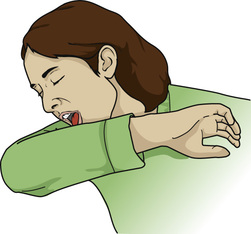
• Bathe, wash hair, and brush your teeth regularly.
• Wash fruit and raw vegetables before eating or serving them.
• Wash cooking and eating utensils with soap and water after use.
See Focus on Children and Older Persons: Common Aseptic Practices.
See Focus on Long-Term Care and Home Care: Common Aseptic Practices.
 Hand Hygiene
Hand Hygiene
Hand hygiene is the easiest and most important way to prevent the spread of microbes and infection. You use your hands for almost everything. They are easily contaminated. They can spread microbes to other persons or items (see Fig. 16-3). Practice hand hygiene before and after giving care. See Box 16-3 for the rules of hand hygiene.
See Focus on Surveys: Hand Hygiene.
See Promoting Safety and Comfort: Hand Hygiene.
See procedure: Hand-Washing, p. 225.
See procedure: Using an Alcohol-Based Hand Rub, p. 225.
Supplies and Equipment
Disposable supplies and equipment help prevent the spread of infection. Discard single-use items after use. A person uses multi-use items many times. They include bedpans, urinals, wash basins, and water mugs. Label such items with the person’s room and bed number. Do not “borrow” them for another person.
Non-disposable items are cleaned and then disinfected. Then they are sterilized by the supply department.
Cleaning.
Cleaning reduces the number of microbes present. It also removes organic matter. Organic matter comes from living plants and animals and is able to decay. Blood, body fluids, secretions, and excretions are organic matter. So is food.
To clean equipment:
• Wash the item with soap and hot water.
• Scrub thoroughly. Use a brush if necessary.
• Rinse the item in warm water. Dry the item.
• Disinfect the item. Or send it to the supply department to be sterilized.
• Disinfect equipment used and the sink.
Agencies have clean and dirty utility rooms. Equipment is cleaned in the dirty utility room. Then it is disinfected or sterilized in the clean utility room.
Disinfection.
Disinfection is the process of killing pathogens. Spores are not destroyed. Spores are bacteria protected by a hard shell. Spores are killed by very high temperatures.
Disinfectants are used to clean objects and surfaces. A disinfectant is a liquid chemical that can kill many or all pathogens except spores. Disinfectants are used to clean counters, tubs, showers, and re-usable items. Such items include:
See Focus on Long-Term Care and Home Care: Disinfection.
See Promoting Safety and Comfort: Disinfection.
Sterilization.
Sterilizing destroys all non-pathogens, pathogens, and spores. Very high temperatures are used. Heat destroys microbes.
Boiling water, radiation, liquid or gas chemicals, dry heat, and steam under pressure are sterilization methods. An autoclave (Fig. 16-13) is a pressure steam sterilizer. Glass, surgical items, and metal objects are autoclaved. High temperatures destroy plastic and rubber items. They are not autoclaved. Steam under pressure sterilizes objects in 30 to 45 minutes.

See Focus on Long-Term Care and Home Care: Sterilization.
Other Aseptic Measures
Hand hygiene, cleaning, disinfection, and sterilization are important aseptic measures. So are the measures listed in Box 16-4. They are useful in home and health care settings and in everyday life.


